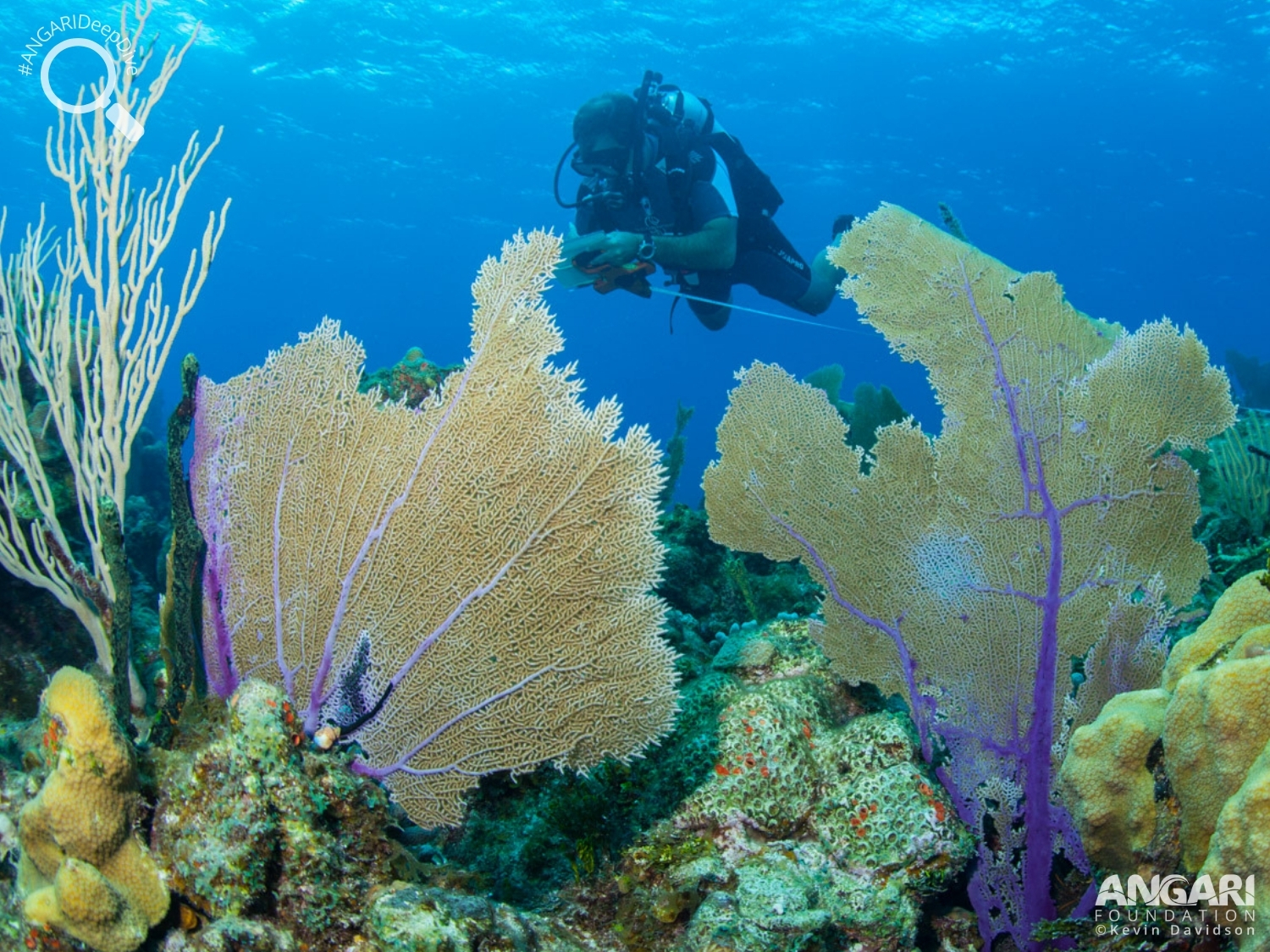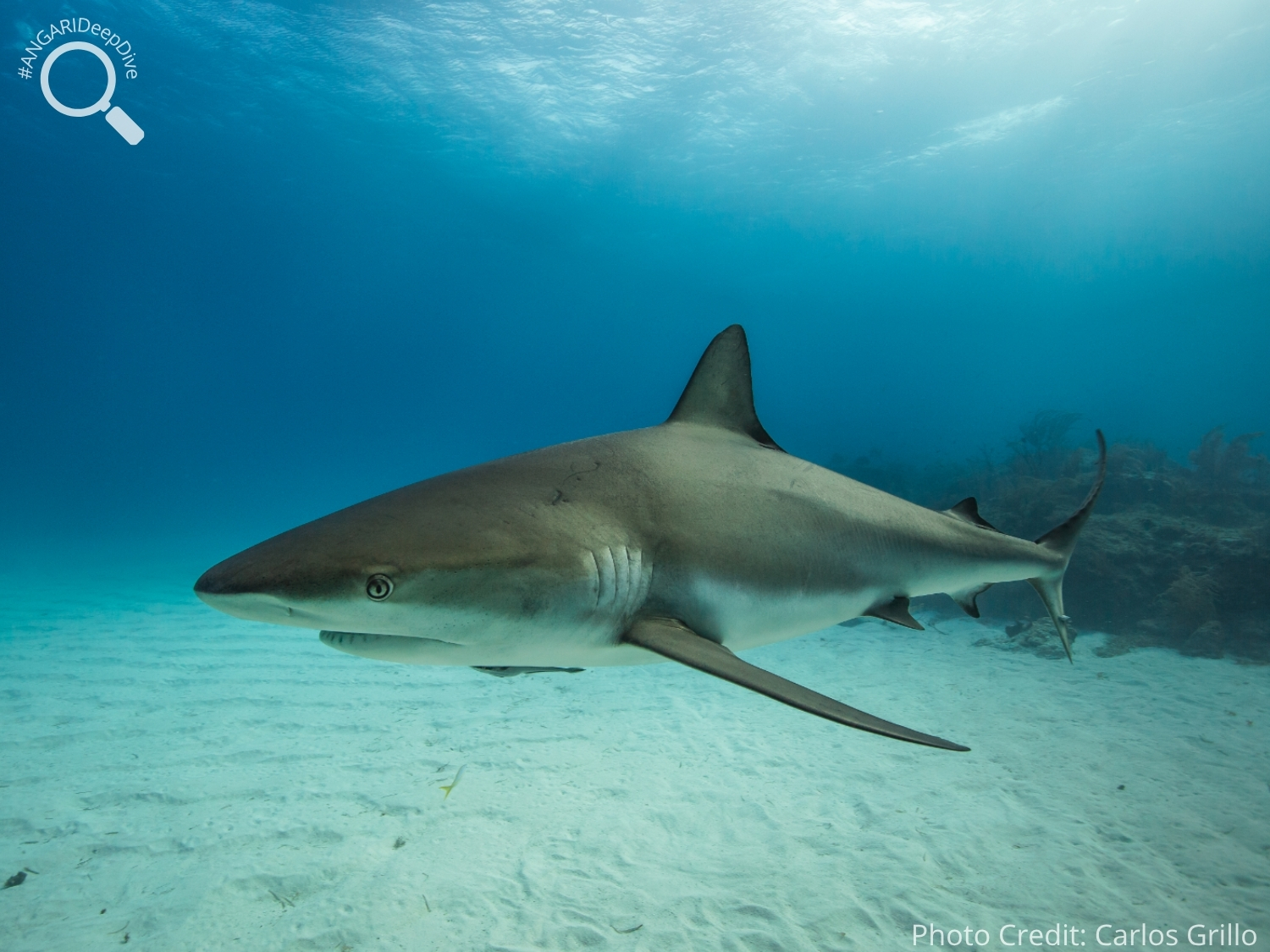Gray angelfish are found on coral reefs in the western Atlantic Ocean and can be identified by their shiny gray body with yellow pectoral fins.
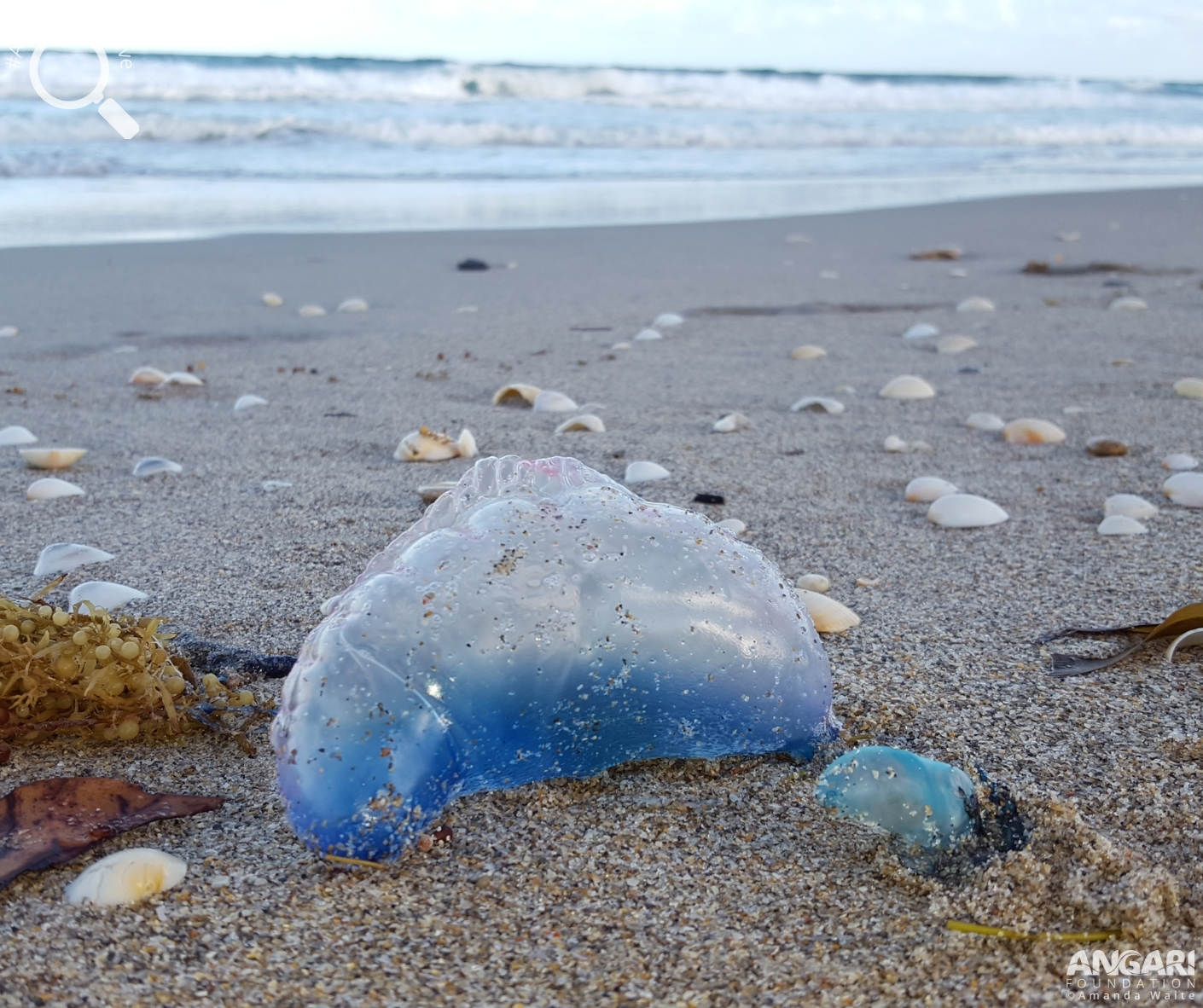
Portuguese Man O’ War (Physalia physalis)
The Portuguese man o’ war (Physalia physalis) is a species of siphonophore that is commonly found drifting on the surface in the Gulf Stream of the northern Atlantic Ocean and in the tropical and subtropical regions of the Indian and Pacific oceans. They have a distinct blue-purple coloration with long tentacles, which can grow as long as 165 feet, trailing behind and below them!
#1: Is the Portuguese man o’ war a jellyfish?
The Portuguese man o’ war is not a jellyfish; it is actually a siphonophore. Unlike jellyfish, siphonophores are incapable of moving through the water on their own and rely on the wind and ocean currents to help transport them. A siphonophore is a species made up of many identical organisms called zooids that live together in a colony. These zooids cannot survive on their own and rely on each other to perform different functions, like digestion, reproduction and hunting.
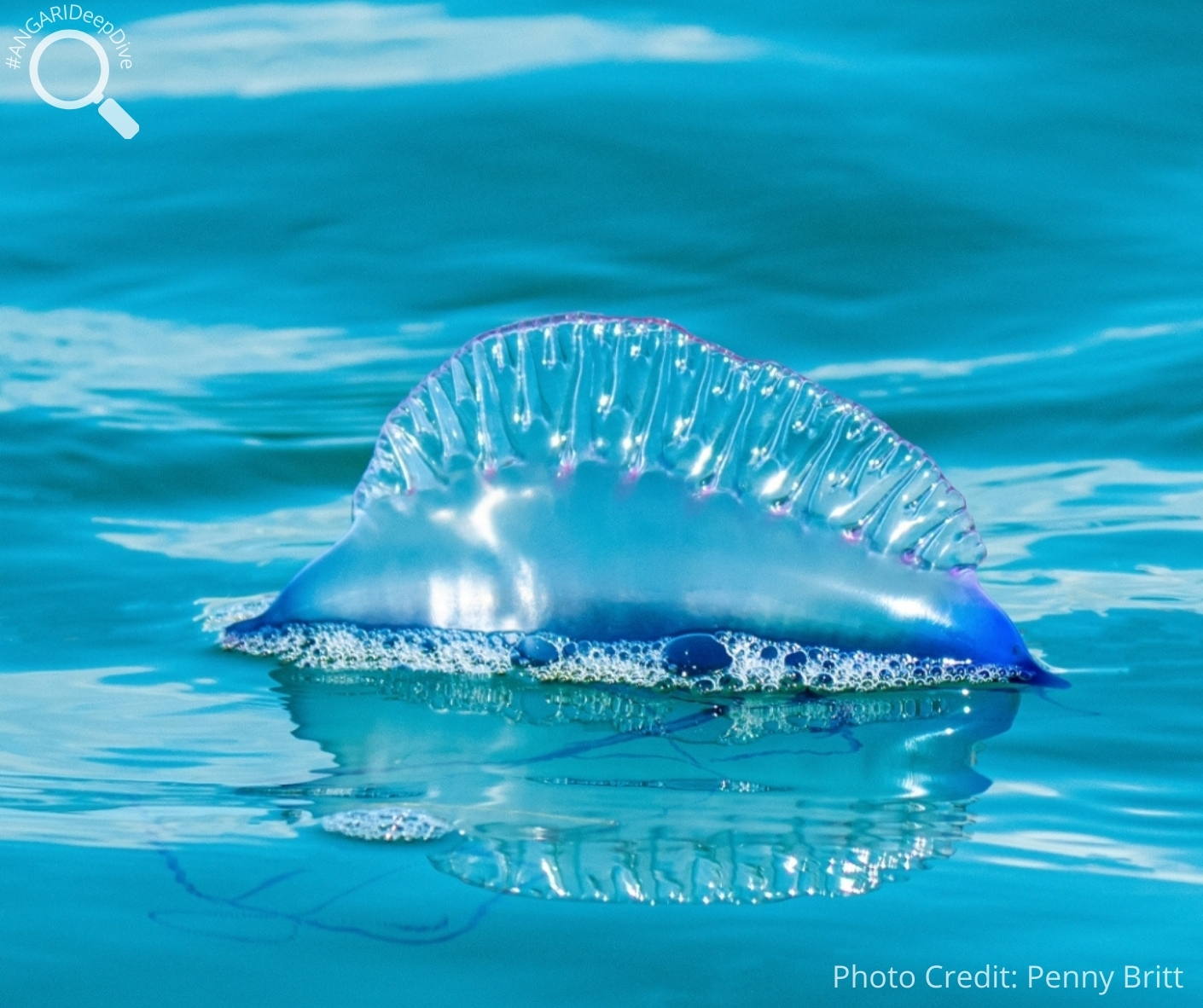
#2: What does a warship have to do with the Portuguese man o’ war?
A Portuguese man o’ war actually gets its name from its resemblance to 18th century Portuguese warships. It is believed that when the warships were at full sail, they resembled this gas filled bladder that floats on the surface of the water.

#3: The Portuguese man o’ war’s pneumatophore.
The extremely identifiable balloon-like float of the Portuguese man o’ war is called a pneumatophore and can grow to 6 inches tall. It is used to keep it afloat and is filled with gases similar to the air we breath. It is thought that this air diffuses into the pneumatophore from its surroundings. When inflated, this float also acts as a sail to help direct the Portuguese man o’ war when it is being transported by the wind.
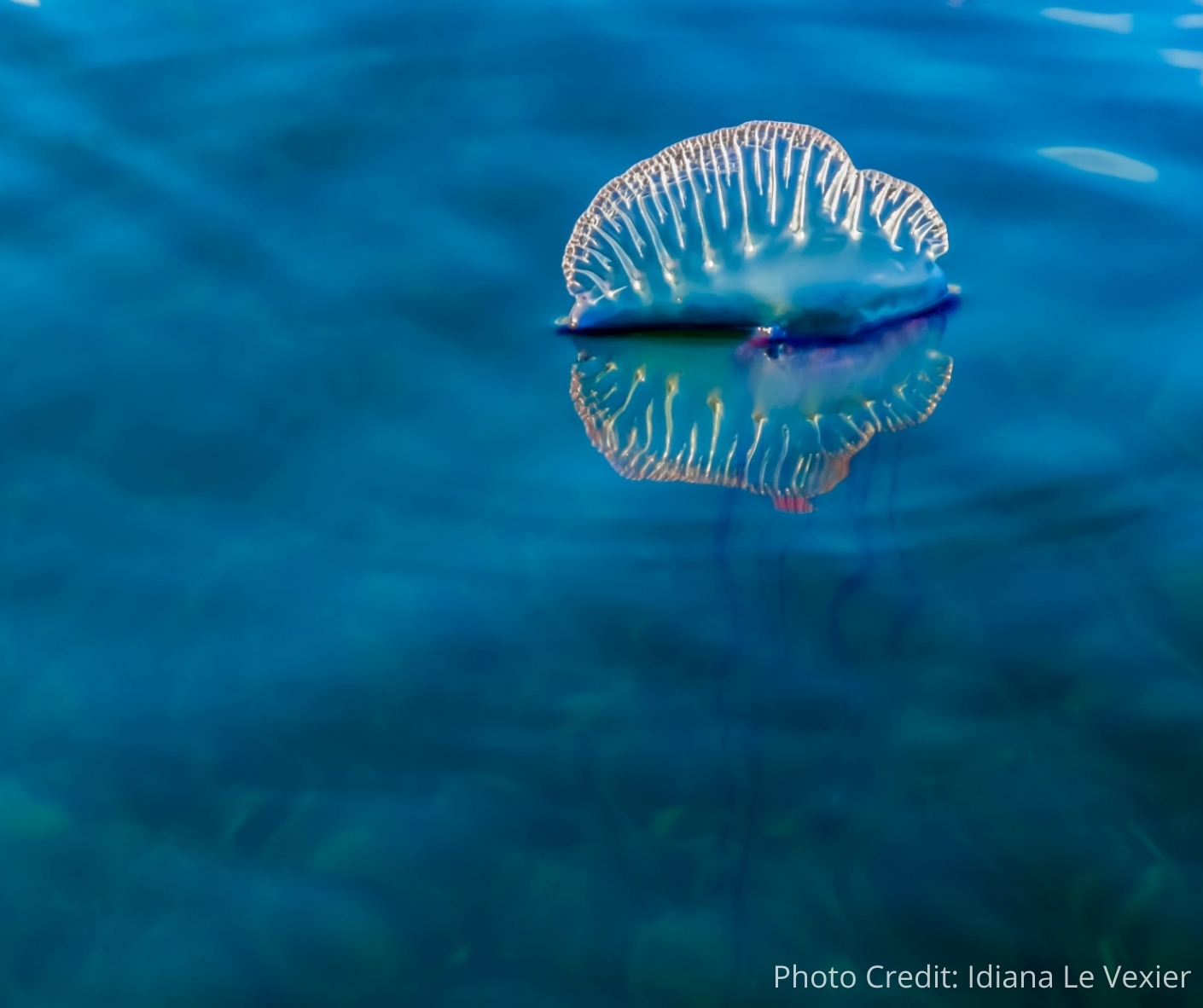
#4: The Portuguese man o’ war is a lethal predator.
The Portuguese man o’ war is a carnivore and uses its long tentacles to paralyze and then reel in its prey. The Portuguese man o’ war will eat species of small fish, molluscs, shrimp and other small crustaceans.

#5: What hunts the Portuguese man o’ war?
Even though the Portuguese man o’ war is very well protected by its stinging defenses, it does still have a few predators. Loggerhead sea turtles, violet sea snails and ocean sunfish all consider it a good meal and will not hesitate to add it to their menus. The blue sea dragon also preys on the Portuguese man o’ war, stealing their venom and using it as part of their own defense mechanism.
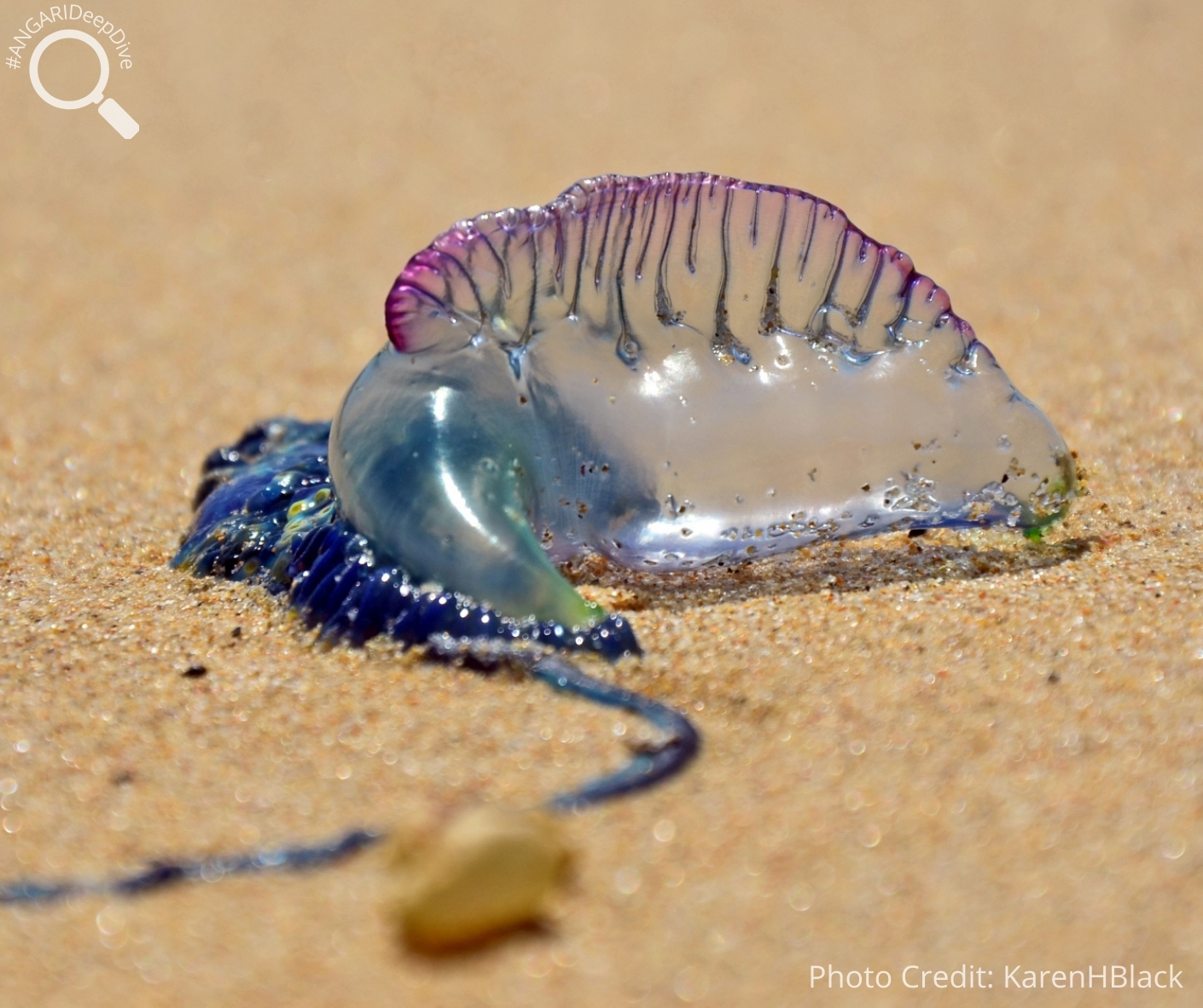
#6: How do Portuguese man o’ war sting?
The tentacles of a Portuguese man o’ war have ‘stinging-cells’ or nematocysts which contain their venom. Nematocysts are tiny capsules that contain a coiled and barbed thread that that when released deliver the venom that is stored within them. A detached tentacle of a Portuguese man o’ war that has washed ashore can actually still sting you, so watch out!
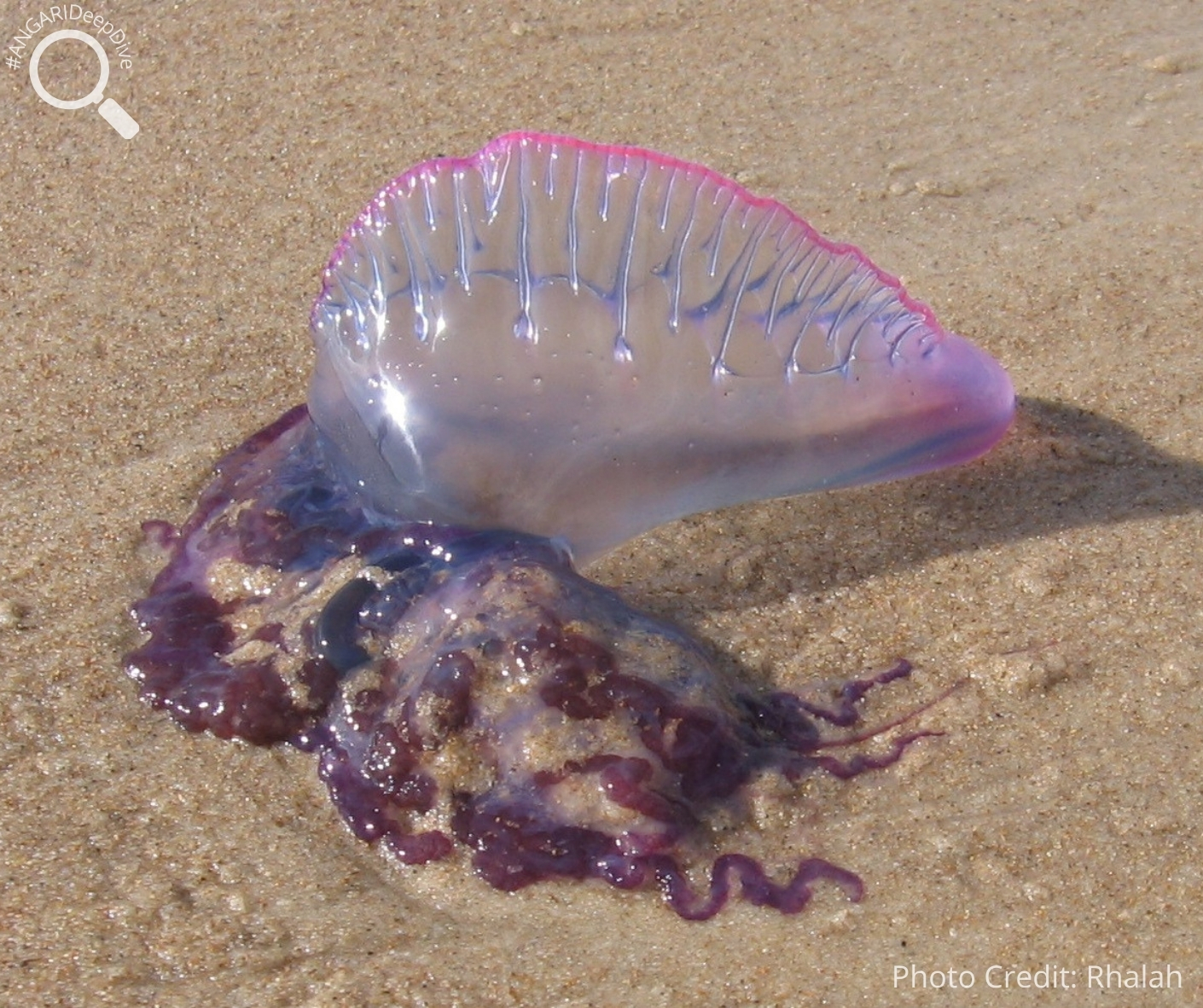
#7: How does a Portuguese man o’ war reproduce?
A Portuguese man o’ war reproduces using broadcast spawning. This is where many males and females will gather together in one place and release their gametes into the water at the same time. Once in the water the female gametes will be fertilized by the male gametes that have been released and create a larvae. This larvae will asexually multiply creating a new colony that will become a mature Portuguese man o’ war.
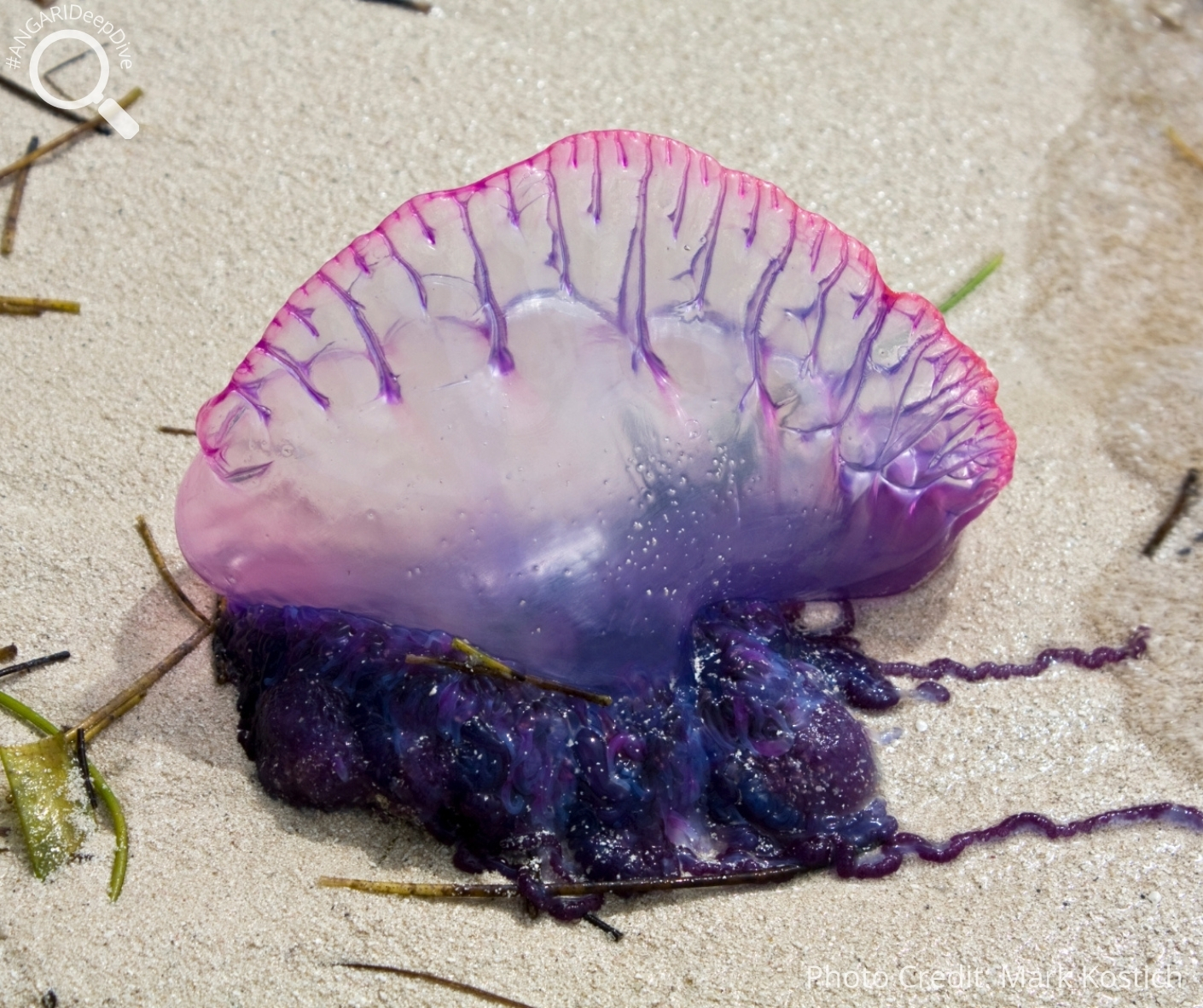
#8: How to treat a Portuguese man o’ war sting?
Do you know what it feels like to get stung by a Portuguese man o’ war? You may experience a sharp stinging or burning pain, swelling and redness in the affected area and red string-like marks could be left on your body. If you are unlucky enough to get stung by a Portuguese man o’ war then it is recommended that you gently remove any tentacles that could still be attached to you but do not use your bare hands! Rinse the affected area with hot water to deactivate the remaining toxins and then apply heat to the area. If you have a severe reaction then you should definitely seek medical attention!

The Portuguese man o’ war is not an endangered species and can be found in abundance within our oceans. Keep an eye out when you are swimming or walking along the beach, admire them from afar and definitely don’t touch them. Although they can cause us some harm, this species has an important role in maintaining a healthy and balanced marine ecosystem by keeping fish population levels in check and also through the recycling of nutrients and organic matter.
Additional Portuguese Man O’ War Resources:
1. What is a Portuguese Man o’ War? – NOAA
2. Portuguese Man o’ War – Oceana
3. Man O’ War Art Lesson & Coloring Sheet – Manatee Lagoon


